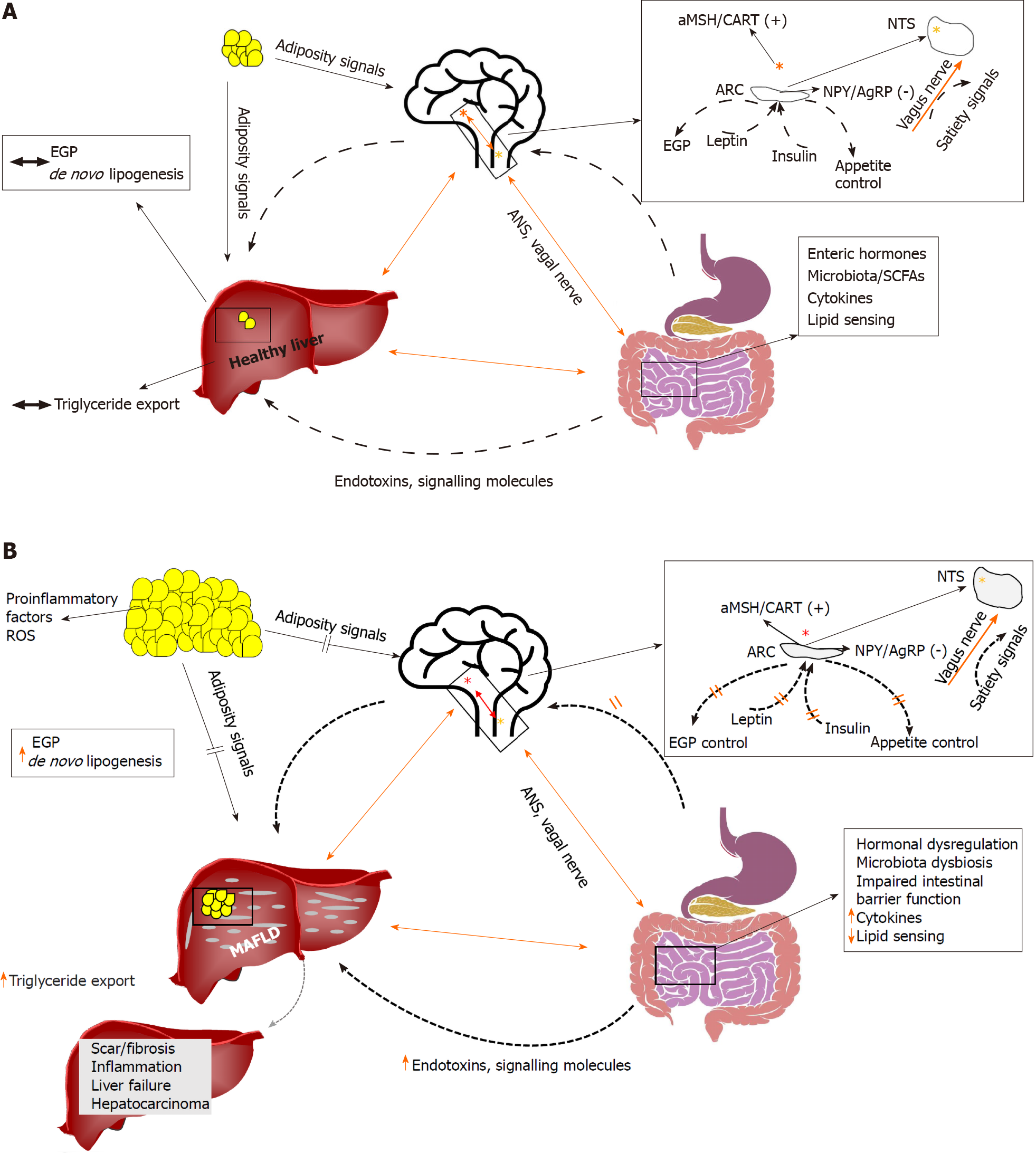Copyright
©The Author(s) 2021.
World J Gastroenterol. Aug 14, 2021; 27(30): 4999-5018
Published online Aug 14, 2021. doi: 10.3748/wjg.v27.i30.4999
Published online Aug 14, 2021. doi: 10.3748/wjg.v27.i30.4999
Figure 1 A summary of some interactions (A) of the brain, liver, and gut in health, and (B) in the context of insulin resistance.
Several lines of research have shown that the brain may directly control endogenous glucose production. Recent evidence suggests that the brain may also control the rate of lipid turnover in the liver, thus promoting or defending from metabolic associated fatty liver disease (MAFLD). The liver is anatomically in close relationship to the gut, which represents the first line of defense against gut-derived endotoxins and signaling molecules (e.g., short-chain fatty acids). Altered gut microbiota and/or a leaky gut may contribute directly to establishment of MAFLD. The gut also produces substantial amounts of hormones that, through endocrine signals, act on the brain and the liver. The autonomic nervous system and the vagus nerve constitute the basis of the brain, gut and liver axis interconnections. Orange line: liver–brain–gut neural arc; dotted line: other ways of communication (e.g., hormonal, adipocytokines). Red star denotes the hypothalamic nuclei; yellow star denotes the nucleus tractus solitaries. αMSH: α-melanocyte-stimulating hormone; AgRP: Agouti-related protein; ANS: Autonomous nervous system; ARC: Arcuate nucleus; CART: Cocaine- and amphetamine-regulated transcript; EGP: Endogenous glucose production; MAFLD: Metabolic associated fatty liver disease; NPY: Neuropeptide Y; NTS: Nucleus tractus solitarius; ROS: Reactive oxygen species; SCF: Short-chain fatty acid.
- Citation: Rebelos E, Iozzo P, Guzzardi MA, Brunetto MR, Bonino F. Brain-gut-liver interactions across the spectrum of insulin resistance in metabolic fatty liver disease. World J Gastroenterol 2021; 27(30): 4999-5018
- URL: https://www.wjgnet.com/1007-9327/full/v27/i30/4999.htm
- DOI: https://dx.doi.org/10.3748/wjg.v27.i30.4999









